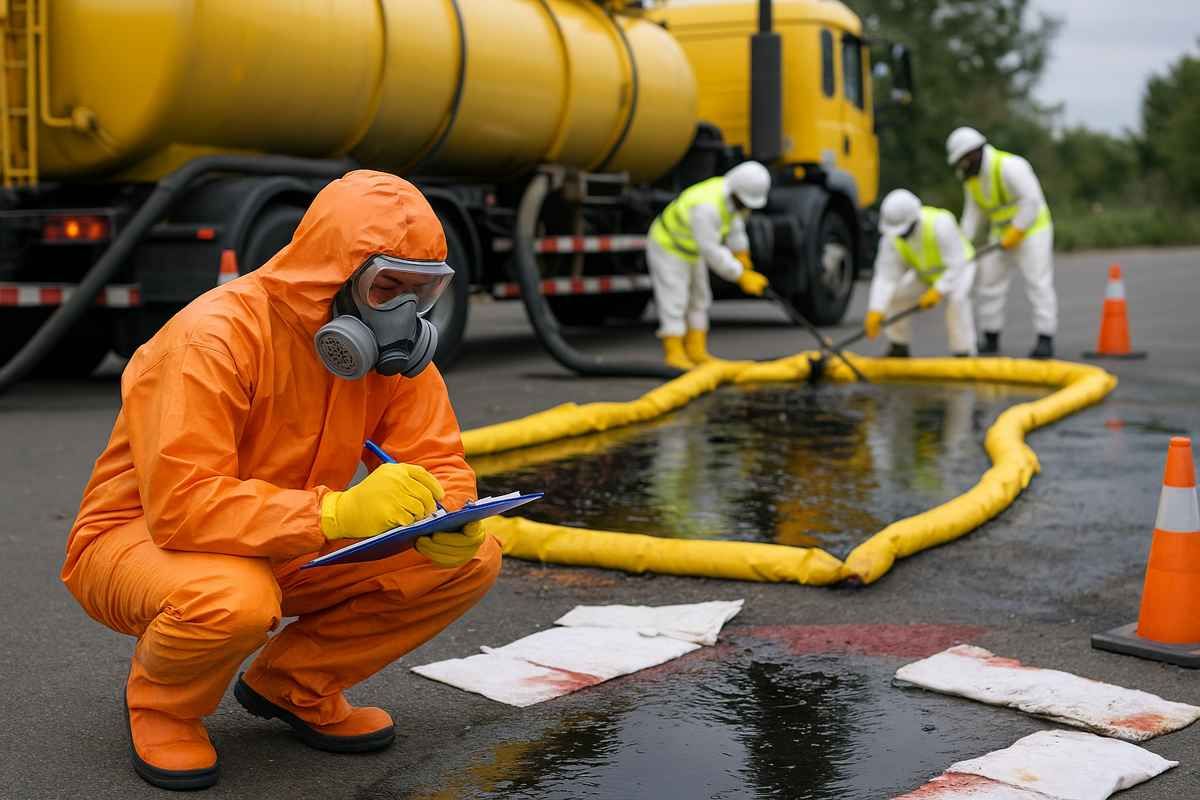
From Spill to Solution — What Happens During a Hazmat Emergency Response
When an oil, fuel, or chemical spill happens, every second counts. Panic often sets in before the cleanup crew arrives — but behind the scenes, a highly trained emergency response team is already gearing up. What seems like chaos is actually a coordinated, regulatory-driven operation designed to protect people, property, and the environment.
Step 1: The Call Comes In
It starts with a phone call to our 24/7 Emergency Response Hotline. Our dispatch team gathers key details — what spilled, how much, where, and whether the material poses immediate risk to life, property, or waterways. Within minutes, our incident commanders mobilize the right resources and personnel for the job.
Step 2: Mobilization & Arrival
Trucks, trailers, and specialized containment equipment roll out — often within an hour. Each response team is equipped with PPE, absorbents, booms, pumps, and neutralizers ready for fast deployment. At the same time, our team coordinates with local fire departments, health agencies, and the EPA as required.
Step 3: Assessment & Containment
On-site, safety officers conduct air monitoring, hazard classification, and risk evaluation before anyone steps closer. The goal: stop the spread. This might include trenching to divert flow, deploying booms to contain runoff, or vacuum extraction for liquid spills.
Step 4: Cleanup & Decontamination
Once contained, the real work begins. Contaminated soil and absorbents are excavated and loaded for proper disposal at approved facilities. Hard surfaces are washed and neutralized, and any impacted storm drains or sumps are cleaned to prevent secondary contamination.
Step 5: Waste Transport & Documentation
Every ounce of waste is tracked through cradle-to-grave documentation, ensuring full regulatory compliance under RCRA, DOT, and EPA guidelines. This is where many DIY responders fall short — paperwork and manifests are not optional; they’re required.
Step 6: Final Reporting & Restoration
Enviro Care completes detailed post-incident reports including analytical results, disposal manifests, and photographic documentation. The site is restored to a safe, compliant condition — often better than before the incident occurred.
Why Professional Response Matters
DIY spill cleanups can lead to:
- Incomplete cleanup and future liability
- Violations of EPA or DEQ reporting requirements
- Fines and remediation costs far exceeding the initial response fee
Don’t wait until the sirens are blaring — keep our number in your emergency plan.
Call Enviro Care’s 24/7 Emergency Spill Response Line: (800) 820-9058 for immediate assistance anywhere in the Intermountain West.
